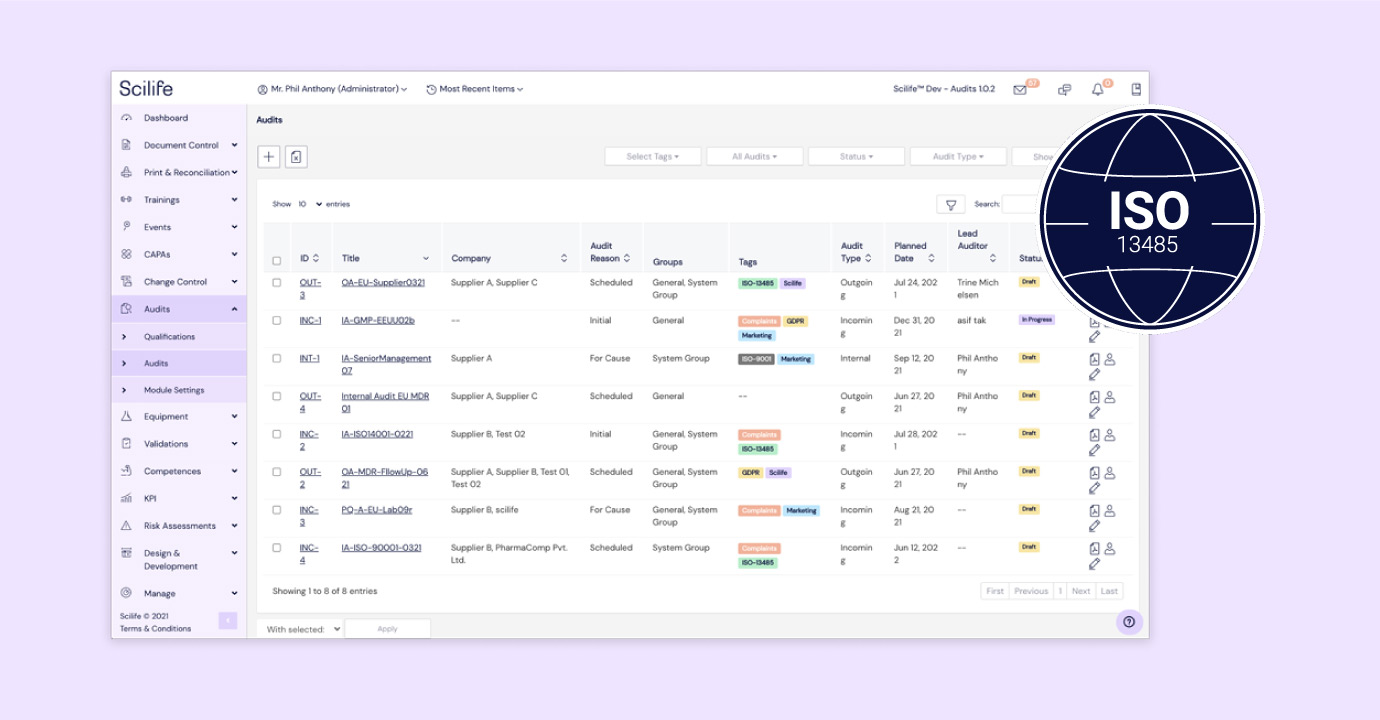
Information runs the world, and in healthcare, every bit of data is important. Every day, hundreds of sets of data are produced as people go about their jobs manufacturing medical products. Every day, almost all of this data is recorded in some way.
In this era of digital transformation, Data also holds a significant role in the regulatory field, not only for record keeping but also for market access. Most regulatory authorities require companies to keep track of every step of the development process. Whether it’s a tiny alteration of an equation during sample tests or the addition of a new type of screw, regulatory people want to know about it. Not only that, but they want to know that you are ensuring it.
There is a pretty good reason for this. A well-documented process is tidy, predictable, and better controlled. The manufacturing teams are aware of what’s happening at each step, and any mistakes can be traced back to the source in a matter of hours. Not only does it cut down time and resources, but documentation prevents mistakes.
What is Document Control?
As keeping records of every step of the development process is crucial, a standardized method needs to be developed. This is where document control methods come in.
Document control, in simple terms, refers to creating and maintaining documents in an orderly and useful manner. While it sounds simple, the process can be strenuous with the huge amount of data in any life science industry.
However, a well-designed system can reduce the workload significantly. Document control is a thought-out, planned process. With a systematic approach, you won’t have to search for documents in the middle of a regulatory meeting!
A document control system will have the following:
- A place to keep all documents and records as they are produced initially and later for storing long term.
- Proper methods of analysis for different types of data.
- Appropriate methodology for data collection from different sources.
- Proper storage method according to the data type and appropriate context.
- System to maintain data collection and storage quality while keeping to international standards.
- Control over data access and protection against potential breaches.
- Automation of various steps of data collection and analysis where possible for the highest accuracy and low labor requirement.
Document Control regulations
International regulatory authorities help companies set up proper document control systems through some requirements. While each country has different requirements on paper, a standard document control system is usually enough to fulfill all of them.
In general, the FDA, MDR, and other authorities require you to:
- Have a set system for collecting data, turning them into documents, keeping those documents, sending them through the proper channel, and ensuring they are accessible easily.
- Have a system for regularly updating documents throughout the development and production process.
- Have a system for storing, protecting, recalling, updating, and analyzing documents.
Mostly, they want manufacturers to have a document system that allows inspections to be thorough and effective. They really can’t certify compliance if all documents containing data to prove compliance aren't delivered. It’s as simple as that.
Recommended learning: Don’t make any mistakes! Discover how to implement compliant document control software.
Why digital document control is important in life science?
Any product in the life science industry generates a lot of data. Even the smallest product, a needle, for example, goes through tons of tests and has manufacturing data and technical documents for submission to the regulatory authorities.
Storing all this data in an appropriate document is a huge task. Even if a structured approach, using checklists and forms, is used, mistakes like wrong entries, spelling mistakes, and computational inaccuracies happen. Since these are all manually added, finding specific data among these documents is challenging. Not to mention, documentation is tedious when done manually, and people tend to skip steps occasionally, defeating the purpose of document keeping.
Additionally, sorting and analyzing these documents by hand is almost impossible in large settings (like medical device companies). So, patterns among data, such as clinical data or risk analysis reports, which are crucial for device development, often go undetected.
That is why today, it makes sense to keep documents in digital form. Whether it's patient history, clinical trial data, or risk management, digitizing documents is far easier than handling manual documents.
How document control can help digital transformation

Digitizing the document control process, in turn, helps companies become more tech-based. As companies embrace technology, their scope of opportunity increases vastly. Technology like 3-D printing, augmented reality, and artificial intelligence open new possibilities and massive scaling opportunities.
However, it all starts by digitizing the existing documents. A key change is that as companies start using software for documentation, they also have the ability to import and use more data than ever. They can start implementing new data-sourcing methods, get trend analysis, keep track of the market, collaborate between different regions, and work directly with end users in real time.
Companies with the right document control tools can implement a cycle of information-based actions that allows them to scale their operation. For example, using apps and keyword tracing, they can get feedback from patients, end users, and doctors, use that feedback to target problem areas in their products, and run post-market surveillance on the updates. The entire process can be automated, ensuring a continuous stream of data. This can be done for multiple products.
Just by digitizing document management, the scope of business increases exponentially.
Benefits of having a document control software
In today’s world, software is multi-use. A well-built documentation software can do a lot more than an average record-keeping software.
Document control in digital format entails using software developed specifically for each document type, using the stored data as beneficially as possible, creating automated reports and automated response action, etc. The key is that once a data set is in digital format, there are numerous ways it can be used, analyzed, and updated by using different tools. The possibilities are endless.
Most documentation software also allows real-time collaboration. Teams can create, review, send, update, and store documents all in a few hours. This is very useful for regulatory personnel, who need to collaborate with individuals at almost every step of the manufacturing process.
Documentation software categorizes and stores documents automatically. Hence, documents of the same category, like clinical trials, PMCF, PMS, etc., can be created and updated at different times yet can be gathered at any time. All documents (and when they were updated) can be found easily for technical document submission for regulatory compliance.
For many, digitization comes with safety concerns. However, software is quite safe if proper precautions are taken. Most software allows access tiers, giving control over who can access which files.
Customization is probably the most useful benefit of document control software. You can create set standard formats for each type of data input once and keep collecting and analyzing data for a while. Unlike manual documents, document management software can implement any change in both new and old records.
The diagram below shows some of the key benefits of Scilife document control software:

Scilife tips
Here are our expert tips on how to start digitizing your document management system:
- Find a good document management software. If you can find one specific for your industry, that would be even better!
- Make sure to standardize all processes. Keep records of standardization methods and updates.
- Upload all documents with appropriate context and info.
- Create templates for regulatory and other required reports.
- Invest in a good cybersecurity system.
- Use the full potential of the digital document management system and scale data sources and usage.
Conclusion
Embracing digital transformation in document control revolutionizes efficiency and compliance in the life sciences industry. By shifting from paper-based to digital systems, companies unlock unprecedented opportunities for innovation and growth. Advanced technologies enable real-time collaboration, automated analysis, and agile decision-making, enhancing productivity and quality management. As industries evolve, those leading digital transformation in quality management are poised to drive forward-thinking advancements in the industry and product development.






